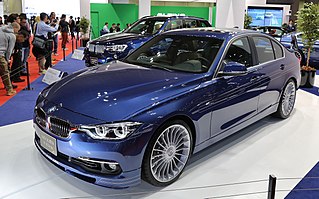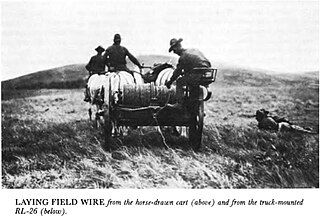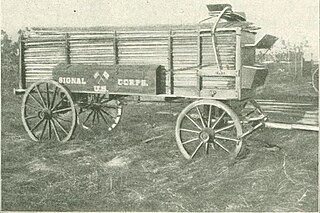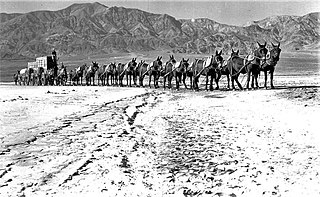 W
WA wagon or waggon is a heavy four-wheeled vehicle pulled by draught animals or on occasion by humans, used for transporting goods, commodities, agricultural materials, supplies and sometimes people.
 W
WThe Alpina B3 (E90) and Alpina D3 (E90) are a series of high performance compact executive cars manufactured by German automobile manufacturer Alpina from 2007 to 2013. Based on the BMW 3 Series (E90), the B3 and D3 were available in coupé, saloon, convertible and station wagon body styles. The B3 was officially unveiled at the 2007 Geneva Motor Show.
 W
WThe Alpina B3 (F30/F31) is a high performance compact executive car manufactured by German automobile manufacturer, Alpina. Based on the BMW 3 Series (F30), the B3 is available in saloon and wagon body styles. The car was officially launched at the 2013 Geneva Motor Show.
 W
WThe Alpina B5 and D5 are a series of high performance executive cars manufactured by German automobile manufacturer Alpina, which is based on the BMW 5 Series of the car manufacturer BMW.
 W
WThe Alpina B5 (E60) is the first generation of the Alpina B5 high performance executive car manufactured by German automobile manufacturer Alpina from 2005 to 2011. Based on the BMW 5 Series (E60), the car was available in saloon and wagon bodystyles. The car succeeds the Alpina B10.
 W
WThe Alpina B5 and D5 (F10) are a series of high performance executive cars manufactured by German automobile manufacturer Alpina from 2011 to 2016. Introduced at the 2010 Goodwood Festival of Speed, the car is the second generation of the B5 and succeeds the B5 (E60). Based on the BMW 5 Series (F10), the car was available in saloon and wagon bodystyles.
 W
WThe Alpina B5 and D5 (G30) are a series of high performance executive cars manufactured by German Automobile manufacturer Alpina. Introduced at the 2017 Geneva Motor Show, the car is the third generation of the B5 and succeeds the Alpina B5 (F10). Based on the BMW 5 Series (G30), the car is available in both saloon and wagon bodystyles.
 W
WA buckboard is a four-wheeled wagon of simple construction meant to be drawn by a horse or other large animal. A distinctly American utility vehicle, the buckboard has no springs between the body and the axles. The suspension is provided by the flexible floorboards of the body and a leaf spring under the seat(s). The buckboard has no sideboards on the body, leaving the floor quite mobile. In rough terrain, the floor can flex and "buck", lending the vehicle its name.
 W
WBuick Century is the model name that was used by Buick for a line of upscale full-size cars from 1936 to 1942 and 1954 to 1958, as well as from 1973 to 2005 for mid-size cars.
 W
WThe Charles Abresch Company was a carriage and wagon factory and an automotive, commercial vehicle and body manufacturer based in Milwaukee, Wisconsin. Brand names were Abresch and, for trucks, the Abresch-Cramer Auto Truck Company.
 W
WA chuckwagon is a type of field kitchen covered wagon historically used for the storage and transportation of food and cooking equipment on the prairies of the United States and Canada. Such wagons formed part of a wagon train of settlers or fed traveling workers such as cowboys or loggers.
 W
WColumbia Wagon Works, also known as Colonial Wagon Company, is a historic wagon factory complex located at Columbia in Lancaster County, Pennsylvania. The complex was built between 1889 and 1920, and includes seven contributing buildings. They are rectangular brick factory buildings with heavy timber frame construction. Six of the buildings are arranged in an "H"-shape. The buildings range in height from one to 3 1/2-stories. The wagon company closed in 1926, after which the buildings housed a tobacco warehouse operated by the American Cigarette & Cigar Company and produce warehouses. Between 1994 and 1996, the complex was converted to house 60 apartments.
 W
WThe Conestoga wagon is a specific design of heavy covered wagon that was used extensively during the late eighteenth century, and the nineteenth century, in the eastern United States and Canada. It was large enough to transport loads up to 3 tons, and was drawn by horses, mules, or oxen. It was designed to help keep its contents from moving about when in motion and to aid it in crossing rivers and streams, though it sometimes leaked unless caulked.
 W
WA corf also spelt corve in mining is a wicker basket or a small human powered minecart for carrying or transporting coal, ore, etc. Human powered corfs had generally been phased out by the turn of the 20th century, with horse drawn corfs having been mostly replaced by horse drawn or motorised minecarts mounted on rails by the late 1920s. Also similar is a Tram, originally a box on runners, dragged like a sledge.
 W
WThe covered wagon was long the dominant form of transport in pre-industrial America. With roots in the heavy Conestoga wagon developed for the rough, undeveloped roads and paths of the colonial East, the covered wagon spread west with American migration. The Conestoga wagon was far too heavy for westward expansion. Typical farm wagons were merely covered for westward expansion. Heavily relied upon along such travel routes as the Great Wagon Road, the Mormon Trail and the Santa Fe and Oregon Trails, covered wagons carried settlers seeking land, gold, and new futures ever further west.
 W
WThe Hollenstein Wagon and Carriage Factory is located in Mayville, Wisconsin. It was added to the National Register of Historic Places in 1979.
 W
WA horse and buggy or horse and carriage refers to a light, simple, two-person carriage of the late 18th, 19th and early 20th centuries, drawn usually by one or sometimes by two horses. Also called a roadster or a trap, it was made with two wheels in England and the United States. It had a folding or falling top.
 W
WA horse-drawn vehicle is a mechanized piece of equipment pulled by one horse or by a team of horses. These vehicles typically had two or four wheels and were used to carry passengers and/or a load. They were once common worldwide, but they have mostly been replaced by automobiles and other forms of self-propelled transport.
 W
WThe John Balzer Wagon Works Complex is located in Sheboygan, Wisconsin, United States. It was added to the National Register of Historic Places in 1993.
 W
WThe K-1 cart is a wire cart type K-1. It comprises a 2-wheel reel cart used for the rapid laying and recovering of telephone and telegraph lines in the field. It is completely equipped with a reel, mechanically rotated and controlled, 1 chest with wire-laying equipment, a driver's seat, and appropriate parts and fittings specially designed and used for only on this cart; designed to carry 5 miles of wire, type W-39. It was formerly known as "Wire reel cart, type N".
 W
WThe K-2 Lance wagon is a light wagon approximately 14 ft long, equipped with a high box body running its entire length, the body surmounted in front by a driver's seat; tool and supply containers are attached to either side of the box; proper re-enforcements are provided and suitable brakes are attached; rear wheel diameter 4 ft 8 in; gauge 4 ft 10 in; height of box body 3 ft 9 in; width of box body 3 ft 4 in.
 W
WThe K-3 cart is a 2-wheel, strongly constructed wire cart, similar to artillery caissons, but equipped for carrying and reeling out wire; used together with Signal cart, type K-4, to form the wagon formerly called "Pintle wire wagon, model 1910."
 W
WA kid hack was a horse-drawn vehicle used for transporting children to school in the late 19th and early 20th centuries in the United States. The word hack, meaning a horse-drawn cab, is short for hackney carriage. The vehicle was actually powered by both horses and mules, and usually loaded at the rear to avoid frightening the animals. In those days, most elementary children in rural areas attended one-room schools. A typical kid hack would serve all the farms in the area of the school, and usually transport under 20 children.
 W
WAn ox-wagon or bullock wagon is a four-wheeled vehicle pulled by oxen. It was a traditional form of transport, especially in Southern Africa but also in New Zealand and Australia. Ox-wagons were also used in the United States. The first recorded use of an ox-wagon was around 1670, but they continue to be used in some areas up to modern times.
 W
WA pantechnicon van, usually shortened to pantec, was originally a furniture removal van drawn by horses and used by the British company "The Pantechnicon" for delivering and collecting furniture which its customers wished to store. The name is a word largely of British English usage.
 W
WPiedmont Buggy Factory, also known as Bearskin Cotton Mills and Monroe Cotton Mills, is a historic building located at Monroe, Union County, North Carolina. It was built in 1910, and is a three-story, rectangular brick building with a shallow pitched gable roof. The brick is in six distinct shades of red. Also on the property are the contributing late-1910s one-story brick boiler house and a steel water tower. Originally built as a buggy factory, in the late 1910s the factory was converted to textile production and renamed the Bearskin Cotton Mills. The facility remained in operation through 1956.
 W
WRadio Flyer is an American toy company best known for their popular red toy wagon. Radio Flyer also produces scooters, tricycles, bicycles, horses, and ride-ons. The company was founded in 1917 and is based in Chicago, Illinois.
 W
WFrank C. Scherer Wagon Works is a historic factory located in the Fairmount neighborhood of Philadelphia, Pennsylvania. It was built in 1887, and consists of a three-story, six bay, red brick and sandstone factory building with a two-story, three bay office building. A one-story addition was built in 1928. The factory building features segmental arched window openings and a parapet. The office building is of yellow and red brick, with sandstone trim. The factory became a warehouse in 1923.
 W
WStage wagons are light horse-drawn or mule-drawn public passenger vehicles often referred to as stagecoaches. Like stagecoaches they made long scheduled trips using stage stations or posts where the horses would be replaced by fresh horses. Stage wagons were intended for use in particularly difficult conditions where standard stagecoaches would be too big and too heavy.
 W
WA stagecoach is a four-wheeled public coach used to carry paying passengers and light packages on journeys long enough to need a change of horses. It is strongly sprung and generally drawn by four horses.
 W
WTelega is a type of four-wheel horse-drawn vehicle, whose primary purpose is to carry loads, similar to a wain, known in Russia and other countries. It has been defined as "a special type commonly used in the southern and south-western provinces for the carriage of grain, hay and other agricultural products".
 W
WThe covered wagon was long the dominant form of transport in pre-industrial America. With roots in the heavy Conestoga wagon developed for the rough, undeveloped roads and paths of the colonial East, the covered wagon spread west with American migration. The Conestoga wagon was far too heavy for westward expansion. Typical farm wagons were merely covered for westward expansion. Heavily relied upon along such travel routes as the Great Wagon Road, the Mormon Trail and the Santa Fe and Oregon Trails, covered wagons carried settlers seeking land, gold, and new futures ever further west.
 W
WA toy wagon has the same structure as the traditional, larger wagon, but is much smaller and has an open top. An average wagon is able to seat one child, and is generally propelled by human power through a handle at the front. Some famous brands are Radio Flyer, Red Rider, Northern Tool and Equipment, Lowe's, Cardinal, and Speedway Express.
 W
WAmong horse-drawn vehicles, a trolley was a goods vehicle with a platform body with four small wheels of equal size, mounted underneath it, the front two on a turntable undercarriage. The wheels were rather larger and the deck proportionately higher than those of a lorry. A large trolley is likely to have had a headboard with the driver's seat on it, as on a lorry but a smaller trolley may have had a box at the front of the deck or the driver seated on a corner of the deck and his feet on a shaft. With a very small trolley, the 'driver' may even have led the horse as a pedestrian. They were normally drawn by a single pony or horse but a large trolley would have a pair.
 W
WTwenty-mule teams were teams of eighteen mules and two horses attached to large wagons that transported borax out of Death Valley from 1883 to 1889. They traveled from mines across the Mojave Desert to the nearest railroad spur, 165 miles (275 km) away in Mojave. The routes were from the Harmony and Amargosa Borax Works to Daggett, California, and later Mojave, California. After Harmony and Amargosa shut down in 1888, the mule team's route was moved to the mines at Borate, 3 miles (4.8 km) east of Calico, back to Daggett. There they worked from 1891 until 1898 when they were replaced by the Borate and Daggett Railroad.
 W
WA vardo is a traditional horse-drawn wagon used by British Romanichal Travellers as their home. Possessing a chimney, it is commonly thought of as being highly decorated, intricately carved, brightly painted, and even gilded. The Romanichal Traveller tradition of the vardo is seen as a high cultural point of both artistic design and a masterpiece of woodcrafters art. The heyday of the living wagon lasted for roughly 70 years, from the mid-1800s through the first two decades of the twentieth century. Not used for year-round living today, they are shown at the Romanichal horse fairs held throughout the year, the best known of which is Appleby Horse Fair.
 W
WA wagon fort, wagon fortress, or corral, often referred to as circling the wagons, is a temporary fortification made of wagons arranged into a rectangle, circle, or other shape and possibly joined with each other to produce an improvised military camp. It is also known as a laager, especially in historical African contexts.
 W
WA wagon train is a group of wagons traveling together. Before the extensive use of military vehicles, baggage trains followed an army with supplies and ammunition.
 W
WA war wagon is any of several historical types of early fighting vehicle involving an armed or armored animal-drawn cart or wagon.
 W
WThe Wisconsin Wagon Company Factory is a historic factory building located at 602 Railroad Street in Madison, Wisconsin. The Wisconsin Wagon Company built the factory building in 1903 to construct horse-drawn wagons and carriages. The company transitioned the building to an auto factory in 1917 and continued to use it until 1957. The building is a well-preserved example of a textile mill industrial loft, a popular factory style in many industries around the turn of the century. It was added to the National Register of Historic Places in 2002.